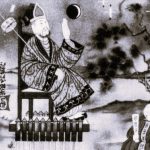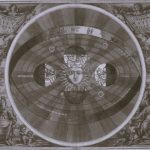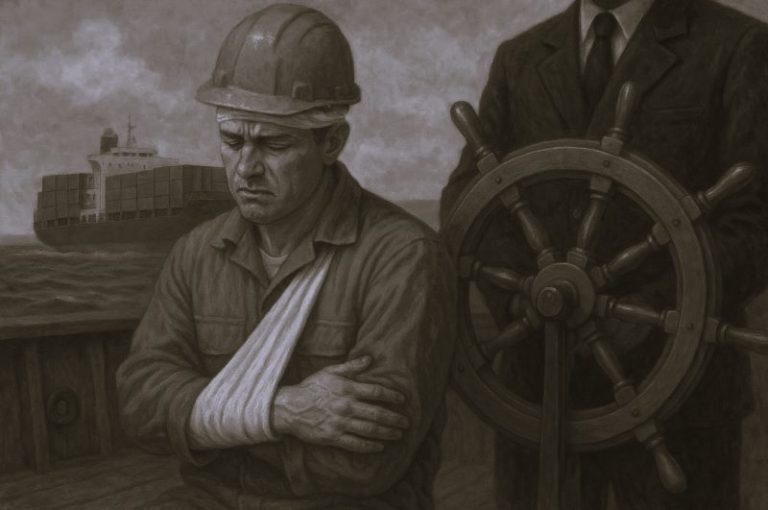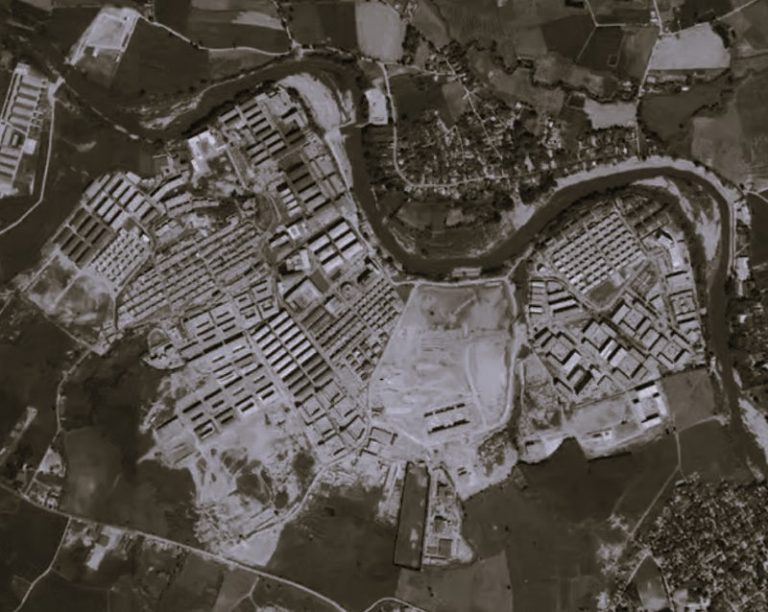

By Dr. Nicholas Vincent
Professor of Medieval History
University of East Anglia
Introduction
The agreement at Runnymede in 1215 had broad consequences for medieval England.


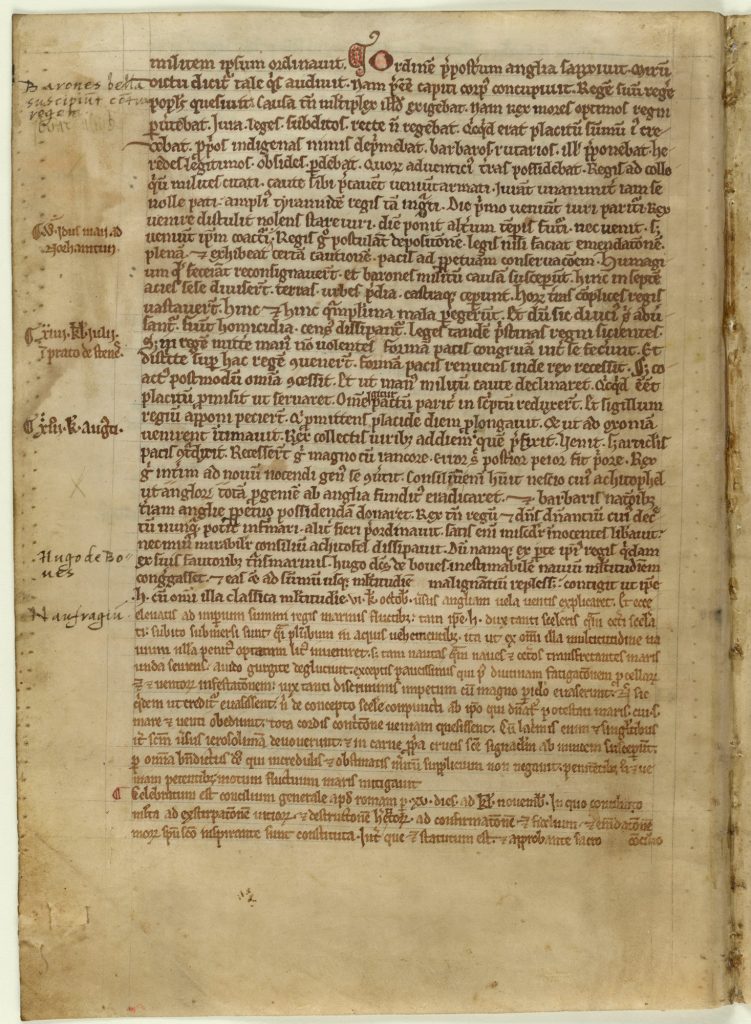
The charter agreed at Runnymede was intended merely as the beginning of a process of reform, not an end in itself. Magna Carta’s first purpose was to establish peace between King and barons. Given the state of England’s roads, summer was the only time of year for military operations. Magna Carta, agreed in mid-June 1215, effectively prevented the outbreak of full-scale warfare. Within a week of its making, the King had written to each county of England requiring his sheriffs to proclaim a firm peace and to make arrangements for the charter to be enforced. Clause 48 of the charter insisted that 12 knights be elected within every county, within the next 40 days, to investigate abuses by sheriffs, foresters and other royal officials and to ensure that such evil practices were never again permitted. The final ‘security’ clause of the charter (clause 61) established a committee of 25 barons to enforce the settlement, to whom oaths were to be sworn by the entire community. These oaths were to be administered in the county courts.
From Peace Settlement to Civil War
From the very beginning, two problems endangered this process of enforcement. The first was relatively easily resolved. The sheriffs could not be trusted to administer arrangements in which their own misdeeds were the object of attack. Nor could they be trusted to act as custodians of the charter itself. As a result, the bishops seem to have stepped in both to ensure that the charter was properly publicised, and to ensure its preservation in their own cathedral archives. Thirteen original exemplars of Magna Carta were written and released from the King’s writing office during the summer of 1215, corresponding precisely to the number of English bishops in office. Three of the four Runnymede charters that survive today were preserved in cathedral archives, and the fourth very probably also.

Much more seriously, the King had no intention of permitting the charter’s long-term survival. Having re-established peace, and in return for a limited investigation of past misdeeds, John intended to rule as he had ruled in the past. A copy of the charter was dispatched to Rome, clearly in the hope that the Pope would annul it. No sovereign authority, either king or pope, could be expected to endorse a charter that placed a ruler under his subjects’ supervision or the head of state under a committee of barons. On 24 August 1215, Pope Innocent III (1161–1216) duly declared the charter null and void.

In England, ignoring the terms of the charter, the King refused to dismiss his foreign constables and mercenaries. The barons refused to surrender London. Rochester Castle, in theory held by Archbishop Stephen Langton (1150–1228), was surrendered to the rebels. By the end of the second week in September, the King’s clerical supporters had suspended Archbishop Langton from office and excommunicated the leaders of the rebellion. England was once again at war. The peace settlement agreed at Runnymede was a dead letter after barely 10 weeks. There followed two years of civil war and French invasion. Large parts of southern England were placed under the rule of Louis, the future King of France (1187–1226).
Revival of Magna Carta


In 1225, at his coming of age, to buy further support and in return for taxation to defend his remaining lands in France, Henry III reissued Magna Carta. It was this charter of 1225 that henceforth became the definitive form, reissued or confirmed on numerous occasions throughout the 13th century. Like the 1216 and 1217 charters, the 1225 Magna Carta cut away nearly half of the text originally agreed at Runnymede. Out went the clauses regulating Jewish debt, taxation, the farms paid by sheriffs for their counties, the insistence that sheriffs and other officers know the laws of England, that the king expel his alien constables, that all hostages be released, and that settlements be devised with both the Welsh and the Scots. Above all, out went all mention of the baronial committee of 25 set above the king to impose justice where the king acted beyond the law.
Taxation and Representation: Proto Parliament

Magna Carta did not put an end to royal tyranny. Henry III and his successors were capable of ruling just as badly as King John. Kings continued to make war for their own glory rather than for the public good. Taxes continued to mount. Several of the clauses of Magna Carta went unenforced. Judicial visitation of the counties, for example, remained a haphazard affair. Justice continued to favour the rich over the poor. The influential remained more powerful than those without influence at court. Even so, within society at large, the repeated and frequent reissue of the charter encouraged the growth of a belief in essential rights and liberties standing above the authority of any particular king. On occasion, when baronial or local discontent boiled over, as it did in 1258, 1264 and again in 1297, there were calls not only for the reissue of Magna Carta but for root and branch reform of royal government on behalf of the ‘community of the realm’. This ‘community’, first referred to in the security clause of the Runnymede charter, came to play an increasingly significant role in politics, as the King’s need for taxation led to the summoning of ‘parliaments’ (literally ‘speakings together’). Here the barons were expected to approve taxation in return for the hearing of petitions and the redress of their own particular grievances.
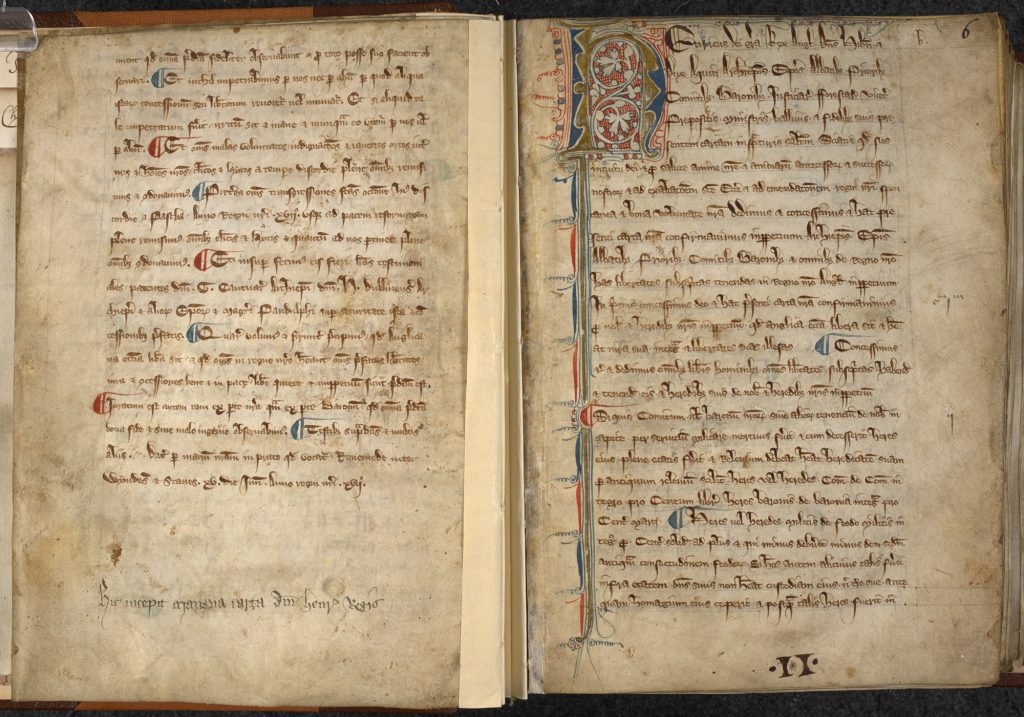
Magna Carta did not itself create ‘Parliament’. Nonetheless, by requiring that taxation be imposed only after consultation with the ‘common counsel of the realm’, Magna Carta in many ways pointed the way to the emergence of parliamentary government. Above all, by insisting that there were rights and customs that stood above the authority of any particular king, Magna Carta, in its many reissues and confirmations, embedded the sense that England was a land of liberties. Even the most powerful of tyrants, the charter suggested, would now have to answer to the rule of law.
Originally published by the British Library, 03.12.2015, under the terms of a Creative Commons Attribution 4.0 International license.

